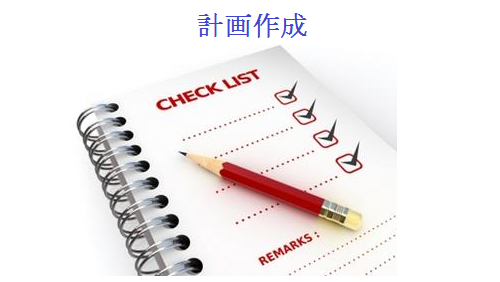55,335 total views, 5 views today
Why we need to make a Japanese learning plan:
While learning goals are a target that you aim for, learning plans will show you which step and action you need to take. That way you can reach your goals steadily, quickly within your time and money budget.
Learning plans helps you manage your time and allocate your time budget strategically (especially with detailed plans), it helps you keep everything in check, to see if what you’re doing is enough for you to reach those goals? If it’s not enough, you’ll need some adjustments.
Learning plans helps you focus solely on what you’re doing, you don’t have to worry about other things because you have already allocated your time into individual tasks.
You might need an hour or two to make a Japanese plan, however, don’t hesitate to spend that much of time, what you can benefit from it will be worth it.
Practice and learning plans:
There are two types of Japanese learning plans:
Mid-term plans (2-4 years): You have to sketch out what you need to do in 2 to 4 years. For example, your goal is to become a Japanese interpreter in 3 years. You can plan to focus on the basis and do some research on the field that you wish to work on (think about it as the time for you to relax since you will be more excited over things that you like) in the first year. In the second year, you need to practise for both the test and your listening and speaking skills. The third year will be the time for you to practise your speaking and writing skills, along with improving your specialized Japanese vocabulary.
Short-term plans (6 months – 1 year): Based on those above mid-term plans to determine what you need to do in each year, only this time is for each quarter, month and day. It’s important to allocate your time for every day.
How to make a Japanese learning plan?
Making a Japanese learning plan isn’t hard, what you need is a goal, take everything in consideration (mostly time), and find out what tasks need to be done to achieve the goal in a specific period of time – how long it takes to complete each task. It goes on like that until you’re able to allocate your time for each day.
For example, if you want to have your N5 after a month learning Japanese, you need to understand things you need to know about the JPLT N5, the JPLT N5 structure, how much N5 vocabulary or N5 Kanji or N5 grammar you need to learn. Split each day’s workload (25 days for example), you will know how much vocabulary, Kanji or grammar you need to learn every day.
You also need to make time to practise listening, writing and sometimes take some sample JPLT N5 so you can learn and see your progression at the same time. From the amount of vocabulary, Kanji…you need to learn in a day, take note of how long it takes for you to learn, which time is the best for you then choose that time to learn every day. You can relax, research, prepare as well as do other things in the remaining time. That’s how you use your day to reach your goal.
Deal with unexpected scenarios
While following your plan, unexpected things will probably happen (illness, family business,.), there are things you can take a rain check on (friend gathering, family business…), there are things you can’t avoid (take a rest to recover from illness). Therefore, you need to have buffer time to back up your plan. For example you can’t learn 7 days straight in a week, only learn in 6 days and spend one remaining day to revise, relax and to deal with unexpected scenarios. When you make a Japanese learning plan, or any other plan, don’t forget about this buffer time.
Review your plan every day
At the end of every day, spend some minutes to review what you have learnt in one day, how would you rank your day? 10 for an excellent day and go on. You’ll be rewarded if the outcome turns out well, and punished if the outcome turns out badly.
Determination
So you have already had your detailed plan, now it’s time to get started. Be determined to achieve your goal, because there will be many hardships along the way. It may be from other factors (friends, studying…) and from yourself (laziness, your love for sleep and all the fun…). Just win over them and over yourself and improve every day.
Adjust your plan
Making a Japanese learning plan is based on the knowledge, prediction, for a point of time in the future. Things can go like planned, or better ( for example. Your goal is to have your N5 in a month, but you can do it in only 3 weeks). You then have to adjust your plan, be flexible. However, don’t take advantage of that to compromise with your laziness and lack of determination.
